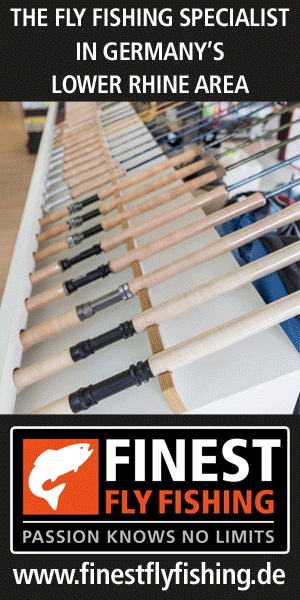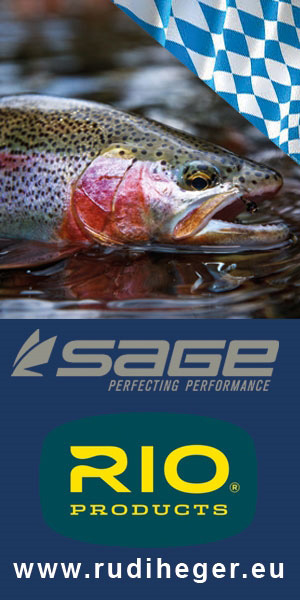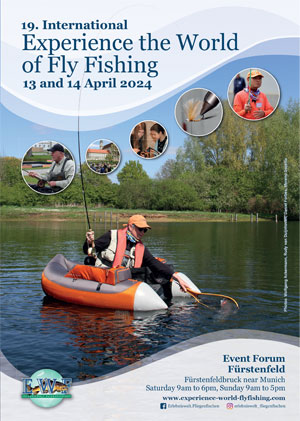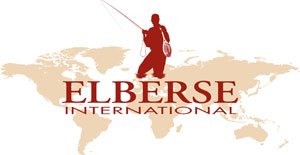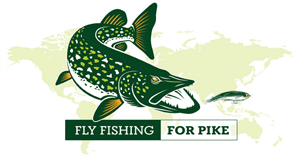
After our first quest for Irish predators, we made a new trip to the green island a year later searching for Irish rovers. New waters and new spots were fished, with several unsuspected discoveries as a nice result.
Paradise for the belly boat angler
If you take a closer look at the area around Killeshandra on an Ireland map, you will find a huge number of lakes, big and small. According to some people there are between 350 and 500 lakes in this part of the country, nobody knows exactly how many lakes there are to be found among the gentle slopes of the many hills. A lot of these lakes are ideally fished with a rowing boat or a boat with an outboard engine, but many of the smaller lakes are more or less created for the belly boat. Both methods of fishing are offered through the Castlehamilton Estate, which is to be found just outside Killeshandra.

Alan and Audrey Kells are running the historical complex in which spacious, modern apartments have been created for sport-fishermen and their families. The four star apartments are equiped with a kitchen, central heating, laundry, towels and a satellite TV. Breakfast and dinner can be served, when desired, in the large spare time room where also a billiard and table tennis table are to be found. Castlehamilton has fifteen boats with an engine available, which can be put in the water in one of the lakes you intend to fish, plus the same number of bellyboats. It is also possible to rent rods, reels and depth finders. Donal Kelly, the fishing guide with whom Alan and Audrey work closely, also openen up a small tackle shop devoted to pike fishing at the village.
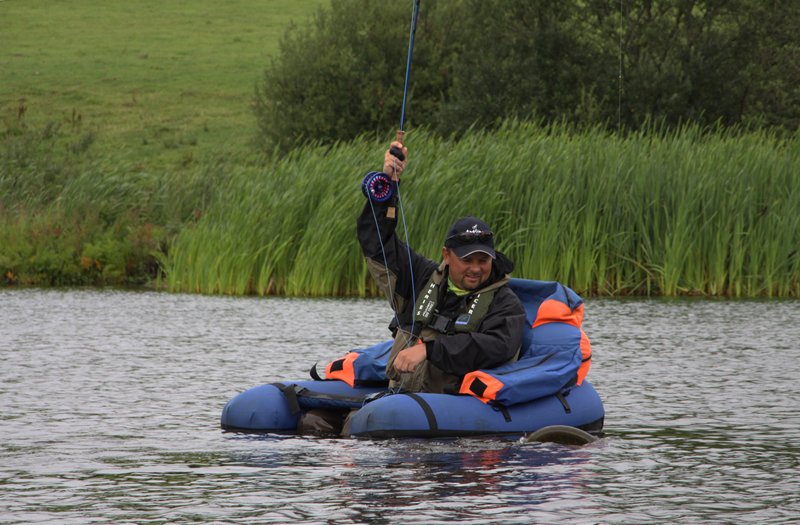
Little fishing pressure
Apart from a fishing guide, Donal Kelly is also a musician and electrician, the relaxed ‘take it Irish for the best time of your life’ seems to have no meaning for him… Donal knows this area and the many lakes here like the back of his hand and he took us along to a number of lakes from small to average size. He usually tries to fish three lakes with his clients each day, after which he rests these for a week at least; this way there is little fishing pressure on these lakes and the catches throughout the year prove him right. Donal likes to fish with lures and dead bait for pike, but fishing the streamer on a fly-rod has stolen his heart. The belly boats and the rest of the tackle are transported in a big van, which makes sense because you do not need to inflate them now at each new venue. From the place where the van is parked, it is usually just a short walk to the waterside and because there are no boats available on many of these small lakes, one fishes in almost virgin waters. Be sure to check whether there are no bulls among the cows in the meadows, there is no room for discussion with an angry bull. We fished these waters with floating and intermediate #8 and 9 fly-lines and nine feet fly-rods in the same line-class. Because of the unusual warm weather that Ireland suffered from in July and August that year, the larger pike seemed to spend their time at greater depths, where even our big streamers were no longer visible to them.

Still even the small to medium sized pike supplied us with a lot of pleasure; it is amazing how much power even these smaller pike can put against a deeply bend fly-rod. The best period is here clearly the Spring and Autumn, even well into Winter, during which you can hook great numbers of pike in often impressive sizes with different fishing methods.

During our exploiting trips in the area we also landed on Trinity Island, a ‘private island’ on which a beautiful lodge has been build that one can rent with a number of friends or family members. The lodge is equipped with all necessary luxury, including a sauna (not bad after a day in the wind and rain); you have the island all to yourself when you rent the lodge. Here you can still really enjoy the quietness of the place, while the towns for the necessary shopping and touring for perhaps the other members of the family, are not too far away.
In the harbour
“The bottom seems to move…” It sounded like a scene from a Indiana Jones movie, but across the bottom of the harbour were moving thousands of crabs from big to small. Not a spot to walk barefoot in the water! As low water kept us in the harbour of Killala for some hours, the entrance needs to be made more deep in the near future, we kept ourselves busy with fly-fishing for mullet from Donal Kennedy’s boat ‘Leah’. Just like the crabs they were looking for leftovers of fish, often they would steal the mackerel heads and tails from the crabs and pull the flesh from the bones. It was clear that these mullets were not just living of algae. A white imitation of a salmon egg seemed to me to represent a piece of flesh rather nicely and I tried to have this sink down close to the feeding mullet. In the clear, shallow water it was nice to see how quickly these fish picked up the fly and how they spit it out even faster; but finally I was just that little bit faster than one of the fish.
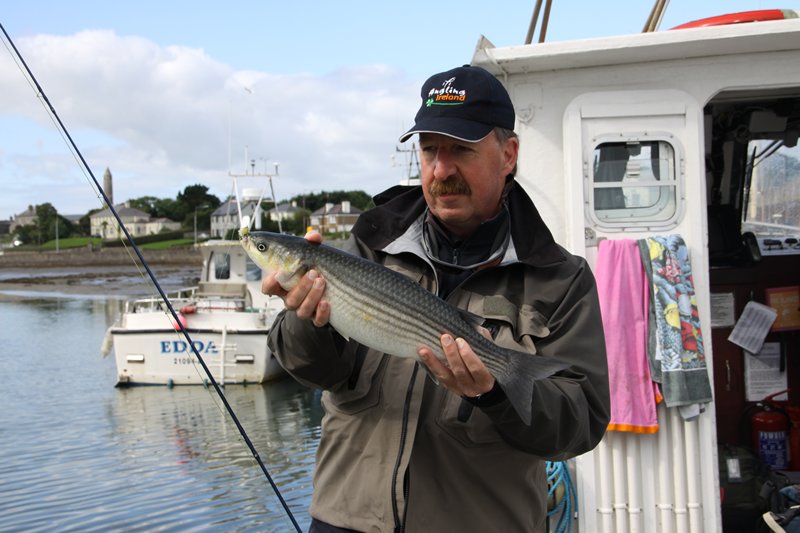
With a #6 fly-rod and a twelve foot fluorocarbon leader with a 3X tippet I managed to hook a mullet on sight, a fish that gave a nice account of itself above the ‘moving bottom’. By reaching far over the side of the boat, I could prevent the fish from damaging the leader against the bottom of the boat. After a fight that lasted for several minutes, I managed to bring the fish over the net, Yes! The barbless fly had found a place in the corner of the mouth, after taking some pictures the fish went back into the water. The rest of the school of mullet was clearly more careful now, we had a few more takes but we were not fast enough with setting the hook.
Going deep
The global warming of the earth not only leads to higher temperatures and more rain in some form or another in our part of the world, there is also more wind than in the earlier years. We, at least, got our fair share of this again in Ireland. The moderate to fresh south-west to west wind made it necessary for us again to fish inside the Killala Bay, drifting with the Leah not too far from shore. A trip to the open sea was just simply not possible on the days we were there. No problem, in the bay there are also a lot of possibilities to fly-fish for saltwater species. Pollack, coalfish and mackerel are present in large numbers. Donal positioned us several times above a rock formation that also held wrasse. I am pretty sure we hooked several of these on our crab-imitations and streamers, but most of them said goodbye before they came close to the boat. Only Mario managed to land a nice and colourful ballan wrasse on the fly.

We fished here with superfast sinking fly-lines on rods in the line-class #8 – 10. With this and with streamers and crabs weighted with brass or lead eyes we managed to reach depths of ten to fifteen meters. Make a short cast and give extra line so that the fly can reach the layer of water close to the bottom. Strip the streamer, shrimp or crab pattern some distance (many species of fish will follow a fly across large distances) and let it sink back to the bottom when no take is recorded. Once at the correct depth, it usually does not take too long before a firm take is recorded. Especially the pollack, and in the upper layers of the waters the mackerel, kept attacking our flies time after time.

Backing up
The wind, to which quite a bit of rain was added in the course of the day, was still present when we fished the River Errif one afternoon after our arrival in the Aasleagh Lodge in Leenane. Our wading jackets were fully tested this afternoon, but these kept us dry and comfortable, I am glad to say. We fished some faster stretches of two beats in the classical manor with floating lines and small salmon flies, but the slower parts of the water were fished with a method that is called “backing up”. While moving upstream slowly, casts are placed across stream and the fly is stripped back with a good amount of speed. A surface that is put into motion by the wind is a clear advantage and we had no shortage of wind this afternoon.

I used a light switch fly-rod, but casting double handed was often not enough in the hard wind to reach the desired distance. Casting single handed and with a proper double strip you can reach, with the same rod, the other side of the river just that little bit better. With this technique Mario managed to hook a nice six pound salmon, after a good fight and taking pictures in the pouring rain, the fish was released unharmed. Our catch consisted this afternoon furthermore of a number of seatrout up to about a pound in weight. At several locations salmon could be seen swirling in and jumping from the water surface.

Casting platform
John Brittain’s boat the Blue Water was going to be our casting platform for the last two days at sea. I have been out to sea regularly with this boat since 1997 and I have experienced some remarkable adventures from this boat. In the last few years the boat has moved from the harbour of Clifden to that of Cleggan, because it is more easily accessible in low water. John is a fly-fisher himself too, so he knows what a fly-fisher is looking for when he sets out to sea with a boat like this. The first day we stayed in the shelter of some large islands in front of the coast of Cleggan, a couple from Devon and a man from Italy joined us this first day and they would fish conventional; no problem, the well kept boat is big enough for this.
John positioned us numerous times over rocky bottoms, at hotspots where the water was ten to eighteen meters deep, so we could reach the bottom with our fast-sinking lines as well. Despite the fact that the water was still quite rough because of the wind, everyone on board enjoyed some good sport. The pollack we managed to hook and land that first day were about six or seven pounds in weight; not too big, but a lot of fun. We also gathered some mackerel for the next day already.
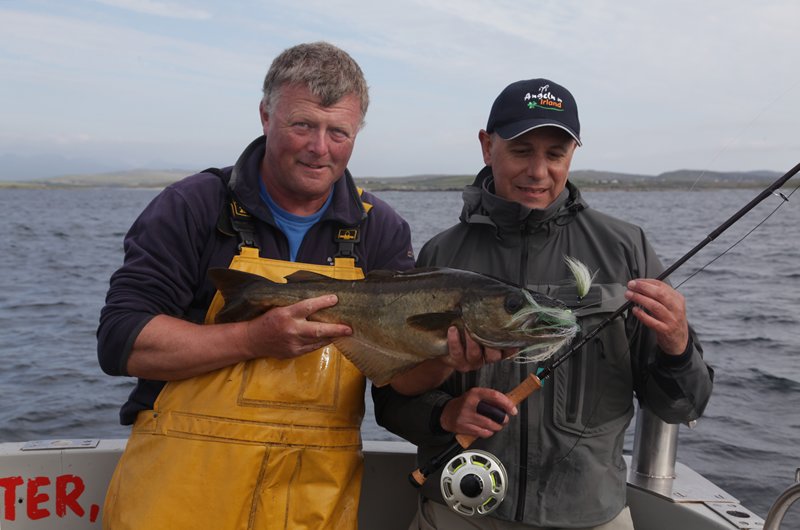
The next day Kevin, Mario and myself had to boat all to ourselves. In the morning it was perfectly calm, but unfortunately it was not going to remain like that. Still we decided to give the deep water a try and thus travel further away from the coast. John moved the Blue Water first in front of one of the islands to gather some more fresh mackerel, than the boat turned and we moved westward, in search of shark.
Out of the blue
Some ten to fifteen miles from the coast the engine was stopped and the first onion-bag full of rubby dubby was hung overboard; John had prepared the rubby dubby the day before already. This mix of pieces of mackerel, blood and oil should make for a nice trail at sea and lure the blue shark towards the boat. The first fish that showed itself under the boat was a wreckfish (Polyprion americanus), it took hold of a piece of mackerel that we presented with a spinning rod, but with no hook in it. This was only the second wreckfish that John had ever seen! Unfortunately the visibility in the water was not good due to overhanging clouds and the wind increased by the hour. The boat rocked after some time like a rock band again, making fishing streamers almost impossible. Only once a small blue shark of some forty pounds in weight came into sight. The fish was not aggressive enough to take our large streamers, unfortunately. She took a close look at both of them, but did not chase them. A pity, but that is the way it is. We will have to come back here to repeat the success of 1997 and 2000: catching several blue shark on fly. The tools of the trade consisted of fly-rods in lengths of 8’6” and 9′ for a line-class #12, large arbor fly-reels that can hold 150 to 200 meters of dyneema backing and intermediate or fast-sinking fly-lines. The leader was made up of something like a meter of 25 lb nylon and a piece of steel wire of 50 cm. As long as the shark does not roll itself into the leader, one has an excellent chance to land a blue shark with this type of tackle.

Travelling back towards the harbour, we made for an hour some more drifts a short distance from Cleggan. The pollack that we hooked here were on average quite a bit larger than the day before! Fish of eight to nine pounds in weight that showed no respect for even the #12 rods that we used and that tried to reach the bottom again with all the power that they had in them. They succeeded in this too, at several occasions, leaving us with little more that a frayed piece of fluorocarbon. A truly exciting sport.
Hopefully we fill get a more quiet period in Ireland next year, in terms of wind, not of takes…
Rudy van Duijnhoven
Information
Inland Fisheries Ireland
– Markus Müller/Kevin Crowley
Ardnaree House, Abbey Street
Ballina, Co. Mayo
Ireland
Tel. +353 (0)96 – 22788
Email: markus.muller@fisheriesireland.ie
Website: www.fishinginireland.info
Castlehamilton Estate
– Alan en Audrey Kells
Killeshandra, Cavan
Ireland
Tel. +353 (0)49 – 433 4840
Mobiel: +353 (0)87 – 207 5013
Website: www.castlehamilton.com
www.fishingcottagesireland.com
Email: info@castlehamilton.com
Donal Kelly, fishing guide
Drumhilla, Killeshandra
County Cavan
Ireland
Tel. +353 (0)86 – 1970 626
Email: extremepikefishingireland@gmail.com
Trinity Island Lodge
Killeshandra, County Cavan
Ireland
Tel. +353 (0)49 – 4334 314
Fax +353 (0)49 – 4334 907
Website: www.trinityisland.com
Email: info@trinityisland.com
Avondale House B & B
Quay Road
Killala, County Mayo
Ireland
Tel. +353 (0)96 – 322 29
Enniscrone / Killala Angling Charter
– Donal Kennedy
Enniscrone, County Sligo
Ireland
Tel. +353 (0)96 – 36644
Mobiel +353 (0)86 – 817 4509
Email: dak@eircom.net
Website: www.dkennedyangling.net
Aasleagh Lodge
Leenane, County Galway
Ireland
Tel. +353 (0)95 – 42252
Fax +353 (0)95 – 42361
Email: erriff.fish@iol.ie
Websites: www.aasleaghlodge.ie
www.errifffishery.ie
Seafishing Ireland / Sharamore House
– John and Sue Brittain
Streamstown, Clifden
Connemara, County Galway
Ireland
Tel. +353 (0)95 – 21073
Mobiel: + 353 (0)86 – 277 9622
Website: www.seafishingireland.net
Email: fishing@seafishingireland.net
Website: www.ireland.com
